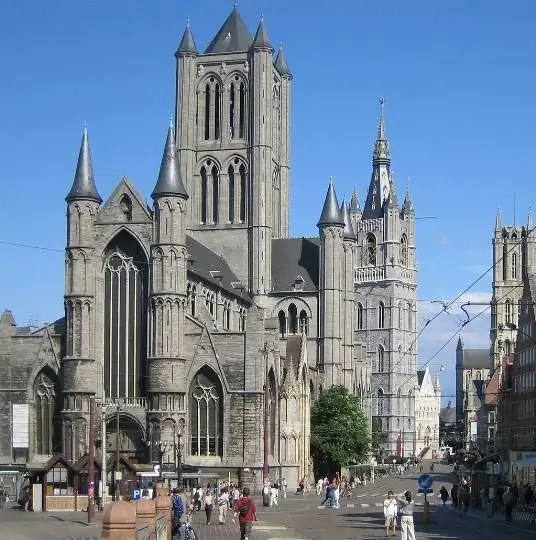
Description of the attraction
St. Nicholas Church is one of the most popular attractions in Ghent. Its construction began in the 13th century on the site of an older Romanesque temple, which appeared here in about 1100, and continued until the end of the century.
The Church of St. Nicholas was built in the Scheldt Gothic style (the name comes from the nearby Scheldt River) from blue-gray stone from Tournai. The use of this building material is typical for buildings in the style of the Scheldt Gothic. Another difference of this church from other similar structures of that time is the original location of the bell tower. It was erected not over the facade with a portal, but over the middle cross. The bell tower is surrounded by low, thin turrets that give it stability. This tower was built with funds allocated from the city treasury in the 13th century. At that time, the city did not yet have the belfry tower, which appeared in the next century. Therefore, the city elders turned the church bell tower into an observation tower. Surveillance of the surroundings was carried out from it, in order to notify the whole city about this in case of an enemy approach.
The Church of St. Nicholas was built near the grain market, on the site of which the Korenmarkt square later appeared. The temple immediately became popular among representatives of various guilds who conducted their business in trade pavilions in the market. In the XIV-XV centuries, they paid for the construction of a number of chapels that adjoined the main nave of the church.
Since the 16th century, no one cared about the repair of the church, so it gradually fell into disrepair. Significant reconstruction of the temple began only in 1960 and continues to this day.






